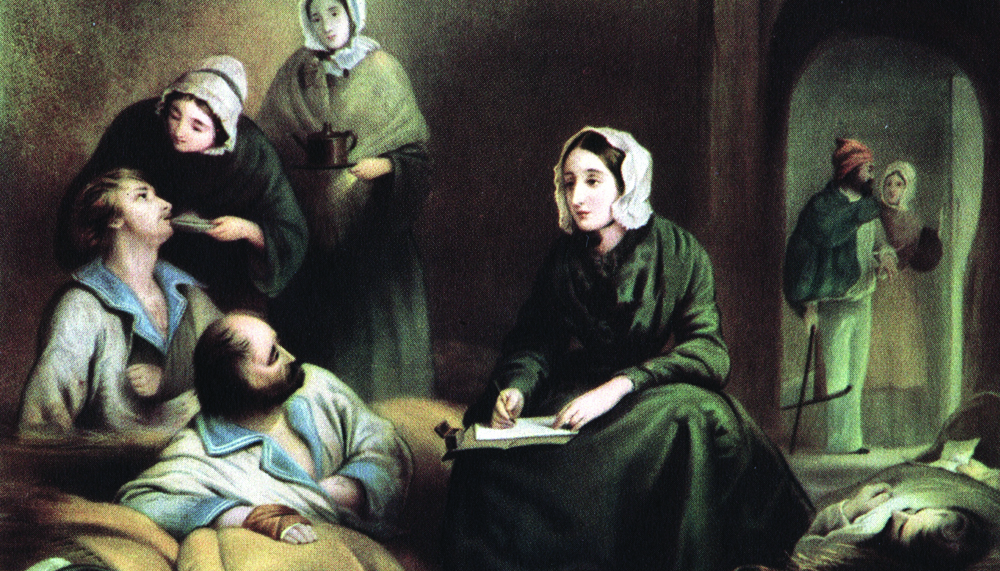A recent road trip to parts of western Victoria gives a reminder of why nurses and midwives occupy such a revered place in local history.
Around Australia, in suburbs and in most sizeable country towns, you’ll find a local history society, sometimes occupying disused court houses, old post offices or other similar public buildings that have outlived their original use. Run by enthusiastic volunteers, these organisations showcase history that is truly local. Whilst individual collections vary in size and scope, inevitably they focus on what made a particular community tick. It’s no surprise to find that each society holds a mountain of interesting information, covering a region’s pre-white settlement, agriculture and/or industry, early transport, recreation and sport, aspects of social history, as well as celebrating local identities.
A mainstay in these local history narratives and exhibits is the development of healthcare. Alongside acknowledgement of community spirit in founding hospitals, usually with lots of local will and little financial support forthcoming from governments, there’s generally an emphasis on individuals who made their mark on health. In exhibits that span from the early years of white settlement to much more recent history, midwives, nurses, doctors and chemists are recognised for their commitment to people who were geographically isolated or otherwise notionally disadvantaged – for example, by poverty or sheer misfortune. In these local history narratives, nurses and midwives who attended the sick or childbearing women tend to be cast as heroic, for performing their duties under extreme and difficult conditions of floods, fires, cyclones and numerous other calamities.
It’s easy to dismiss such accounts of courage as clichéd. But travelling miles and miles through scrub, on terrain without made roads, at night amid ferocious storms in the tropics, through snow in the high country, it’s hard to imagine that women did this work for the money! As I visited local history collections around north-western Victoria recently, I learnt that every location values the contribution of midwives and nurses, those from the 19th centuries, through to the 20th and 21st. Some societies have published accounts of healthcare development in a geographic region. A fine example comes in a 2009 text published by the Pyramid Hill & District Historical Society. Compiled and edited by Helen Stevens, Bandages, Bedpans Pills & Stethoscopes: A History of all things medical in Pyramid Hill and District details the numerous attendants known to have performed attending and healthcare work in one small Victorian community just to the north of Bendigo.
Beginning in the mid-19th century, Stevens’ book traces healthcare development in the region right up to the 1990s. It covers not just the known individuals who provided bedside care, but the founding of reputable private hospitals by nurses, the financial efforts to establish and maintain a community-driven bush nursing hospital (which functioned from 1932 to 1995) and an increasing reliance on more sophisticated care available only at larger base hospitals. Pyramid’s history includes short biographies of midwives, nurses, veterinarians, chemists, herbalists, opticians and doctors. It’s replete with photographs and lists of staff employed at the hospital, as well as newspaper extracts of accidents and injuries incurred by locals. It even recalls the auxiliaries of ladies who sewed and cooked to raise the necessary funds to keep their hospital open.
Along a similar vein, the Pioneer Women’s Hut near Tumbarumba in New South Wales published The Midwives of Rosewood and other birth stories and The Midwives of Tumbarumba and other birth stories by Elsie Shephard. Like the Pyramid Hill text, Shephard’s books really showcase the work of women without resorting to critiquing their preparation for practice (or lack thereof) as many conventional medical histories do. Following in Shephard’s style are three more recent books by Mavis Gaff-Smith, each with a geographical focus: Midwives of the Black Soil Plains, Riverina Midwives: from the mountains to the plains and No Births on Monday.
These latter published works and the collections of local history societies remind us that, from simple and sometimes unsophisticated beginnings, Australian healthcare has a proud history, with nurses and midwives at its foundation. Doubtless, there are numerous other examples of Australian healthcare history waiting to be noticed or unearthed. It may take only a short visit to your local history society to discover just a little about nursing’s antecedents where you live or work.
Dr Madonna Grehan is a registered nurse and director, Australian Nursing and Midwifery History Project.
Do you have an idea for a story?Email [email protected]
 Aged Care Insite Australia's number one aged care news source
Aged Care Insite Australia's number one aged care news source


Reflecting on the article further inspires me to continue encouraging our nursing students be able to know and reflect on our Nursing History and History at the local and global level.
Keep up the great work in this journal
Best Wishes
Mary Abbot
Undergraduate Indigenous Nursing Tutor
University of Southern Queensland